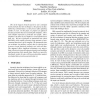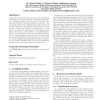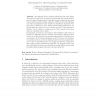205 search results - page 7 / 41 » Detecting algorithmically generated malicious domain names |
ACSAC
2004
IEEE
14 years 9 days ago
2004
IEEE
One of the biggest obstacles faced by user command based anomaly detection techniques is the paucity of data. Gathering command data is a slow process often spanning months or yea...
GECCO
2009
Springer
14 years 3 months ago
2009
Springer
In this paper, we evaluate the performance of ten well-known evolutionary and non-evolutionary rule learning algorithms. The comparative study is performed on a real-world classiď...
GECCO
2009
Springer
14 years 1 months ago
2009
Springer
In this paper, we evaluate the performance of ten well-known evolutionary and non-evolutionary rule learning algorithms. The comparative study is performed on a real-world classiď...
CSFW
2004
IEEE
14 years 8 days ago
2004
IEEE
Intrusion Detection Systems (IDSs) have become an important part of operational computer security. They are the last line of defense against malicious hackers and help detect ongo...
RAID
2010
Springer
13 years 7 months ago
2010
Springer
The fast-flux service network architecture has been widely adopted by bot herders to increase the productivity and extend the lifespan of botnets’ domain names. A fast-flux bot...



